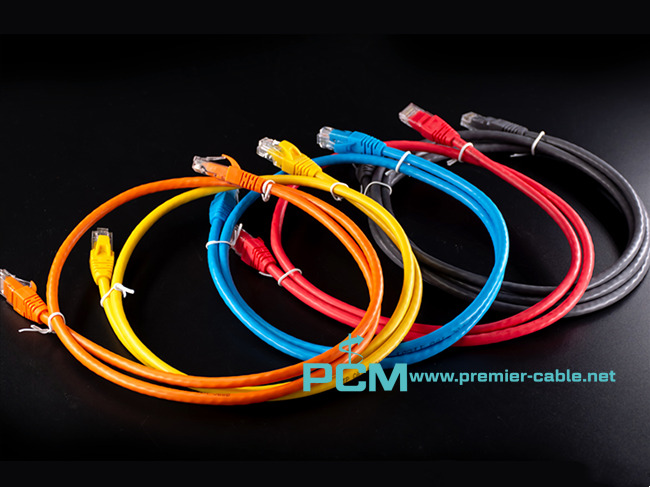 A Group Company Focus On Cables Since 2002
A Group Company Focus On Cables Since 2002Date: 06-06/2022 Click: 3016

The network cable cat5e means super five network cables. Category 5e refers to Category 5e Unshielded Twisted Pair (UTP—Unshielded Twisted Pair) and Category 5e Shielded Twisted Pair (STP). The twisted-pair refers to the cat5e network cable, which has eight inner cores, which are wound together in pairs, in order to better prevent current crosstalk.
The main difference between UTP and STP is that the surface of STP is wrapped by a layer of metal, which has good effects in preventing radiation and information theft, while the surface of UTP is wrapped in plastic and does not have an anti-theft function, but it is also, therefore, The price is more affordable.
1. Both CAT.5E and CAT.5 have a transmission frequency of 100MHZ
2. Different classifications: cat5 belongs to Category 5 network cable and does not support duplex applications. The cat5e belongs to the Super Category 5 network cable and supports duplex applications.
3. Different production processes: Cat5 uses two pairs of copper cores as the transmission medium for sending and receiving messages (one pair is used for sending messages; the other pair is used for receiving messages). Cat5e uses four pairs of copper cores as the transmission medium to support higher-speed transmission protocols.
4. Different stability: Cat5 has poor anti-interference ability, so the stability is insufficient, and it is usually used as a domestic network cable. The Cat5e network cable emphasizes the cumulative power performance, improves the stability of cable transmission, and can meet the long-distance transmission of high-quality data, and is used in Gigabit Ethernet.
5. The standard requirements are different, and the Super Category 5 includes the requirements for duplex applications. Category 5e cable provides a series of test standards, such as providing four pairs of copper core transmission, which will specifically focus on the performance of far-end crosstalk to ensure that the network can support Gigabit network operation, and Category 5e cable emphasizes cumulative power performance to improve the stability of cable performance. The specific performance is that the attenuation requirements of the two are the same, and the requirements for near-end crosstalk and return loss are higher than Category 5. PS-NEXT (Near-End Crosstalk of Adjacent Pairs) ELFEXT (Equal-Level Far-End Crosstalk) PS-ELFEXT (Equivalent Far-End Crosstalk Attenuation) Delay Skew (Delay) and other data that reflect duplex requirements are only applicable in Super Category 5 lines.
6. In fact, the requirement of Category 5 is put forward because the original Category 5 requirements can no longer meet the needs of current network growth or that Category 5 cables support higher-speed transmission protocols. Only the super five cables can guarantee the high-speed growth network requirements of video calls and online movies!
For more information, please leave a message online.
Prev:Cebit 2016 HANNOVER MESSE Hall 17 Booth # L13
Next:OEM One-Stop Factory for NMEA 2000 Marine Ship Heavy-Duty Vehicle Industrial
Relaed Articles